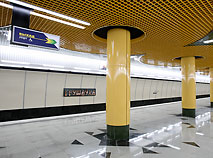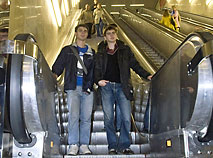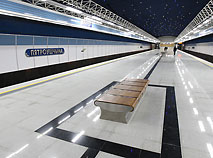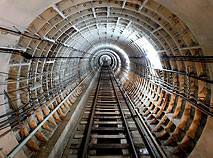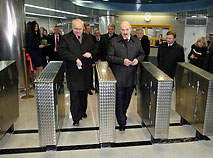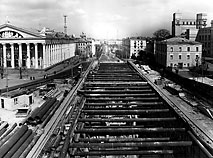Minsk metro
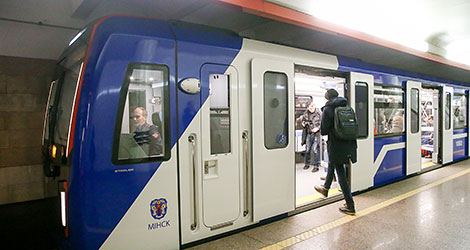
Minsk metro
The Minsk metro is the country’s only metro. It is the most convenient and fastest way of travel in the Belarusian capital. Every year about 800,000 passengers travel by metro.
Minsk metro history
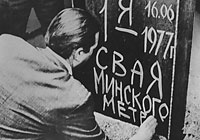 The construction of the metro in Minsk began in 1977. 30 June 1984 saw the launch of the regular train service along the first line from the station Institut Kultury to the station Moskovskaya. The Minsk metro was the ninth metro system built in the USSR.
The construction of the metro in Minsk began in 1977. 30 June 1984 saw the launch of the regular train service along the first line from the station Institut Kultury to the station Moskovskaya. The Minsk metro was the ninth metro system built in the USSR.
A peculiarity of the Minsk metro is its close proximity to the surface: due to the level of ground waters Minsk metro stations are located closer to the surface (10-17 meters).
In order to keep the city’s architectural outlook intact, the tunnels and the stations were built with a high degree of reliability and precision in mind. Every metro station has its own inimitable architectural outlook.
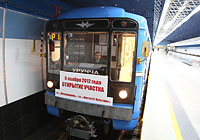 In 1990 part of the second line from the station Traktorny Zavod to the station Frunzenskaya was opened. Later on the two lines of the Minsk metro grew longer while new tunnels and stations continue being built today.
In 1990 part of the second line from the station Traktorny Zavod to the station Frunzenskaya was opened. Later on the two lines of the Minsk metro grew longer while new tunnels and stations continue being built today.
The first section of the third line of the Minsk metro opened in November 2020. It includes four stations Kovalskaya Sloboda, Vokzalnaya (transfer to the first line, the only station with an above-ground concourse), Frantishek Bogushevich Square, and Yubileinaya Square (transfer to the second line, the deepest station in Minsk – 32m below the surface).
The new line is unique as all technological processes are fully automated. The new stations are the first in Minsk to feature platform edge doors – protective screens that prevent people from falling on the track. Moreover, the third line, which connects northern and southern neighborhoods of Minsk with the center, uses new electric trains produced by Stadler Minsk.
The Minsk metro development plan provides for a total of four lines with 63 stations and the overall length of 87.9km.
Minsk metro nowadays
By the number of transported passengers the Minsk metro ranks 4th among 16 metro systems of the Commonwealth of Independent States. The Minsk metro falls behind only the metro systems of Moscow, Saint Petersburg, and Kyiv.
The modern Minsk metro is:
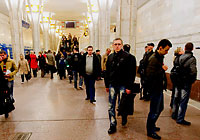
-
three lines with 36 stations: the first line is Moskovskaya (15 stations), the second line – Avtozavodskaya (14 stations), the third line – Zelenoluzhskaya (7 stations)
-
total track length – 45km
-
average speed – 45km/h (up to 80km/h in some sections)
-
passenger traffic of about 800,000 people per day
Minsk metro stations are convenient for passengers. You can get into the underground using stairs while entrance halls of nine stations are equipped with escalators. Apart from that, most the stations have lifts or elevators for low-mobility passengers.
Limiting lines are installed along the edge of the metro platforms for visually challenged people to get their bearings.
Mobile phone service is available from the main mobile carriers at all the metro stations.
Minsk metro chart
 Charts of the Minsk metro lines are available in railway cars. Names of the stations are written in Belarusian and Russian.
Charts of the Minsk metro lines are available in railway cars. Names of the stations are written in Belarusian and Russian.
Signs bearing names of metro lines and stations are located at platforms while signs with names of streets and other landmarks (shops, theaters, stadiums, mass transit system stops) are located at exits from metro stations.
Minsk metro opening hours
Minsk metro stations are open to passengers from 05:30 in the morning till 00:40 in the night.
Time between trains:
-
in rush hours in the morning and in the evening (07:00-09:00, 17:00-19:00) – from 2.0 to 2.5 minutes
-
the rest of the day – from 2-3 to 12 minutes (after 23:00)
Minsk metro fees
To pay for passage in the Minsk metro you can use:
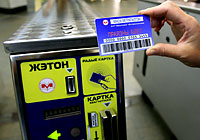
-
tokens (for one trip)
-
contactless smart cards (for multiple trips)
Before you board a train you have to buy either a token or a card and pass through the ticket barrier, which is fitted with token slots and scanning machines.
One token is designed for one trip of any length from the time you enter the metro and till you leave. One token costs Br0,90 (about $0.31).
Contactless smart cards are used as travel cards and are valid for one mode of transport or more (depending on the tariff a passenger chooses).
Travel cards for UNLIMITED number of trips (subway and overground public transport):
-
10 days from any date
-
15 days from any date
-
1 month or 30 days from any date
Travel cards for a CERTAIN NUMBER of trips (subway and overground public transport):
-
10, 20, 30, 40, 50 trips (valid for 60 days from the date of sale)
-
60 trips (valid for 80 days from the date of sale)
Universal travel card (all modes of city public transport and city lines of Belarusian Railways) valid from any date for unlimited number of trips:
-
3 days
-
5 days
-
10 days
-
20 days
-
30 days
If you transfer to another metro line you do not have to pay extra.
Safety and security in Minsk metro
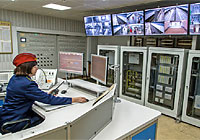 All the Minsk metro stations are fitted with CCTV and the records are kept for at least 72 hours. Video cameras have been installed in railway cars, too.
All the Minsk metro stations are fitted with CCTV and the records are kept for at least 72 hours. Video cameras have been installed in railway cars, too.
Passengers can use emergency communication devices at metro stations to summon police or the station’s duty officer. The same devices can be used in railway cars to contact the train driver.
Dedicated security officers are stationed in entrance halls, at platforms, and in passages in addition to police personnel.
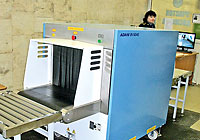 The metro system operating company runs a microclimate analysis lab that tracks the concentration of chemical substances in the air every day.
The metro system operating company runs a microclimate analysis lab that tracks the concentration of chemical substances in the air every day.
Minsk metro stations are fitted with blast inhibitors.
For security purposes the Minsk metro uses metal detectors and scanners. Stations with heavy passenger traffic have dedicated personal examination areas where security personnel can examine large bags of passengers.


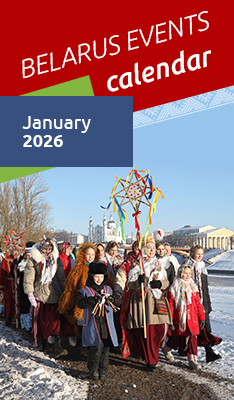




 print version
print version make home page
make home page add to bookmarks
add to bookmarks